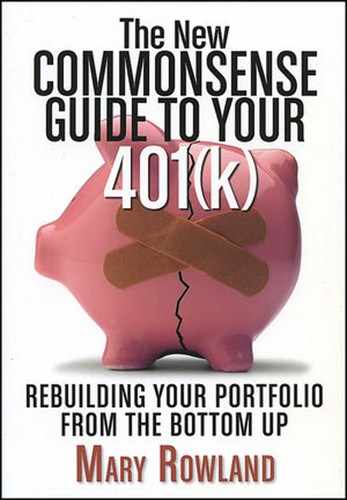I ALSO CALLED ROSS LEVIN, president of Accredited Investors, a wealth management firm in Minneapolis. I haven't known Ross for quite as long as Don Phillips, but for almost as long.
At the time I got to know Don Phillips, I'd started writing columns and books and giving speeches to financial advisors. Before that, I'd been writing about the mutual fund industry from the consumer's perspective for some years, trying to make advice accessible to readers of Woman's Day, Family Circle, McCall's, and Ladies Home Journal and writing articles for Reader's Digest and USA Today. In 1986, Bob Veres, whom many in the financial planning industry see as a guru and, of course, others dislike, was editor of Financial Planning magazine. He asked me to write a mutual fund column, and I've been writing columns for financial planning magazines ever since. This was a time of huge change in the financial planning industry, where those planners who were independent, who served as fiduciaries for their clients rather than as salesmen pocketing a commission, made an indelible mark on the profession, and continue to do so.
Ross Levin is one of a small group of planners who came together in 1992, called themselves the Alpha Group, and began sharing information and goals and standards. Levin is also a person of honesty and integrity who tells a straight story. When I talked with him in March 2009, Levin told me that his firm hadn't lost any clients in 2008 but that the assets he managed for clients (assets under management or AUM) had declined from around $740 million to $500 million. "I've never seen investor psychology like this," Levin said. "My clients think the market will go to zero." Levin writes a column for the Minneapolis Star Tribune, in which he's told people that when things are too bad to be true, they're not true. "I don't think it's as bad as people think," he said. But he acknowledged that investor psychology drives the market, and with people expecting the market to go to zero, things weren't looking good.
The 2008 market represented the worst time in his career of managing money, Levin said, because all the asset classes blew up at the same time. That happened in 1987 when the Japanese market blew up, Levin said, but then the markets bounced back quickly. In the technology crash of 2000, the Standard & Poor's Index of 500 stocks was down 50 percent and the Nasdaq was down 80 percent. Levin's clients lost 11 percent that year. But in 2008, when the market was down 50 percent, Levin's clients lost 35 percent.
I asked Levin if he was making any changes in his recommendations to clients with 401(k) plans. His firm does not charge clients for advice about 401(k) plans. The only change the firm made was to increase the amount of cash clients held. At the end of 2007, he raised at least three years worth of cash in 401(k) portfolios. "For our clients close to retirement, we're going to get cash by putting new contributions into a money market fund," he said.
As for other investments, "We are fundamental believers in mean reversion," Levin said, meaning that market prices will revert toward the mean or average. But he knows from studying behavioral finance that losses mean twice as much as gains to investors. In other words, an investor who loses $50 is much more distressed than an investor who gains $50 is happy. Investors love to make money, but they hate losing it even more. Good financial advisors like Levin know that. Levin had three clients—one with $4.5 million, one with $3.5 million, and one with $2 million—who took everything out of stocks in early March when the market was at a twelve-year low. They locked in their losses. Within a week, all three wanted to get back into the market.
Levin and his team have not lost their faith in asset allocation. But the volatile markets of 2008 and 2009 caused them to move from passive investing to active investing. Passive investors simply allocate investments across broad market indexes and leave them be (see p. 142). Active investors attempt to do better than the indexes by underweighting and overweighting certain sectors of the market in addition to trading. For example, when Levin's firm was up over 100 percent on its investment in New Asia within a couple of months, they sold it off. In a bull market, it's tough to beat the indexes, Levin says, when everything is going up. But in a bear market, active managers may be able to identify stocks that will go against the trend.
